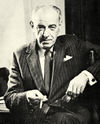The High Wire: Difference between revisions
imported>Hayford Peirce (brought in my template, so to speak, to get started with the next Haggard book) |
imported>Hayford Peirce (→Reception and/or Appraisal: removed old quotes) |
||
| Line 13: | Line 13: | ||
Reviews were favorable: | Reviews were favorable: | ||
<blockquote>''The New York Times'': | <blockquote>''The New York Times'': xxxxxx <ref>Anthony Boucher, ''Criminals at Large'', ''The New York Times'', September 30, 1962 at [https://timesmachine.nytimes.com/timesmachine/1962/09/30/121655953.html?pageNumber=200]</ref></blockquote> | ||
<blockquote>''Kirkus Reviews'': | <blockquote>''Kirkus Reviews'': xxxxxx <ref>''Kirkus Reviews'', September 1, 1962 at: [https://www.kirkusreviews.com/book-reviews/a/william-haggard/the-unquiet-sleep/]</ref></blockquote> | ||
==References== | ==References== | ||
<references/> | <references/> | ||
Revision as of 12:13, 7 October 2020
Authors [about]:
join in to develop this article! |
The Hire Wire is a 1963 suspense novel by the British author William Haggard published in England by Cassell and in the United States by Ives Washburn. It was Haggard's fifth of 21 books involving his protagonist Colonel Charles Russell, the head of the unobtrusive but lethal Security Executive, a government counter-intelligence agency, where he moves easily and gracefully along C.P. Snow's Corridors of Power in Whitehall. Like Haggard's earlier books it has standard elements of suspense thrillers along with detailed examinations of character, with much of its story line being dictated by the characters and their motivations rather than standard thriller conventions.
Plot
Protagonist is perhaps too strong a word to describe Colonel Russell. As Haggard himself wrote about his fiction:
My novels are chiefly novels of suspense with a background of international politics. A Colonel Charles Russell of the Security Executive, a not entirely imaginary British counter-espionage organization, while not a protagonist in the technical sense, holds the story line together in the background by his operations, while the characters in the foreground carry the action."[1]
Reception and/or Appraisal
Reviews were favorable:
The New York Times: xxxxxx [2]
Kirkus Reviews: xxxxxx [3]
